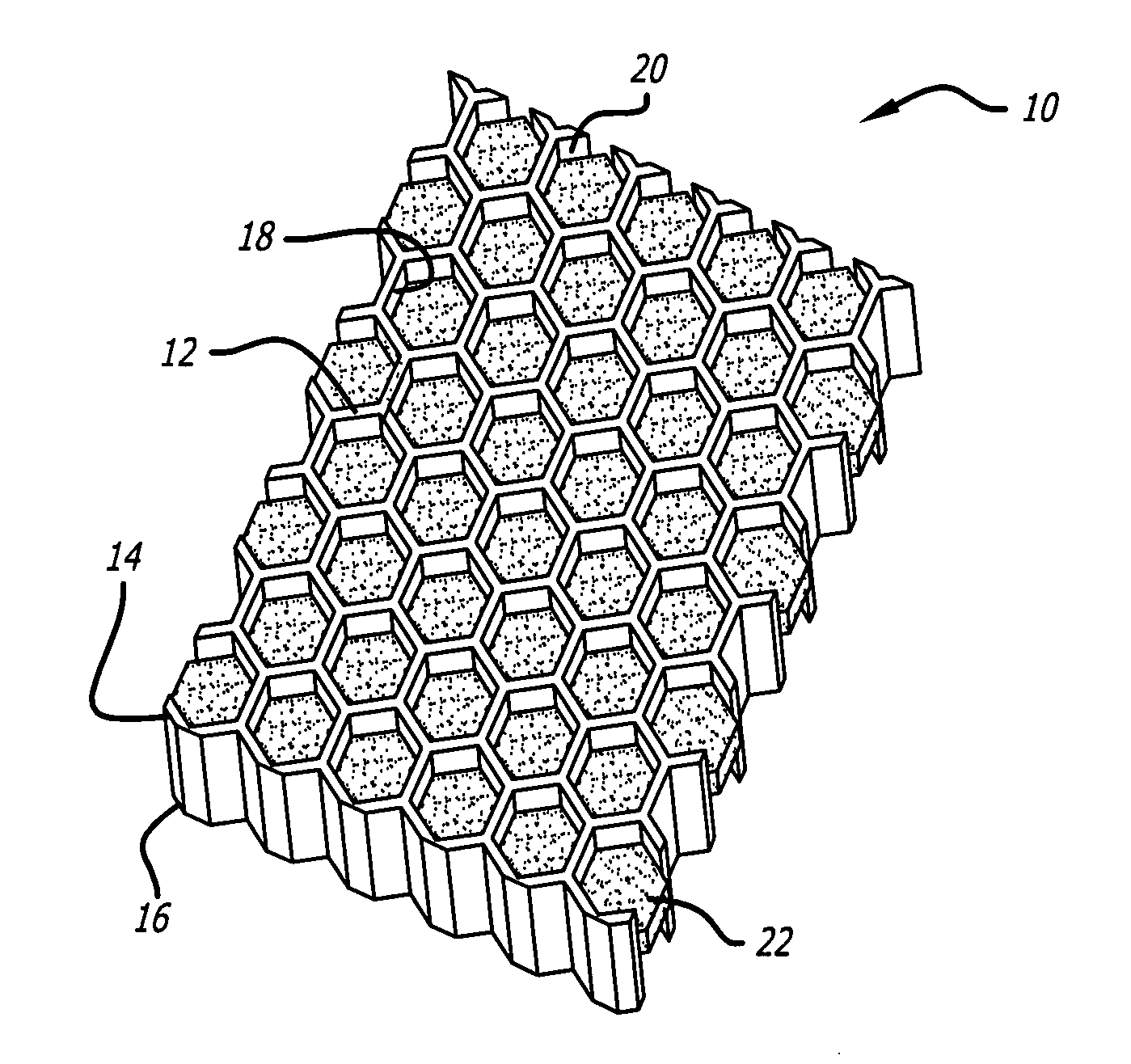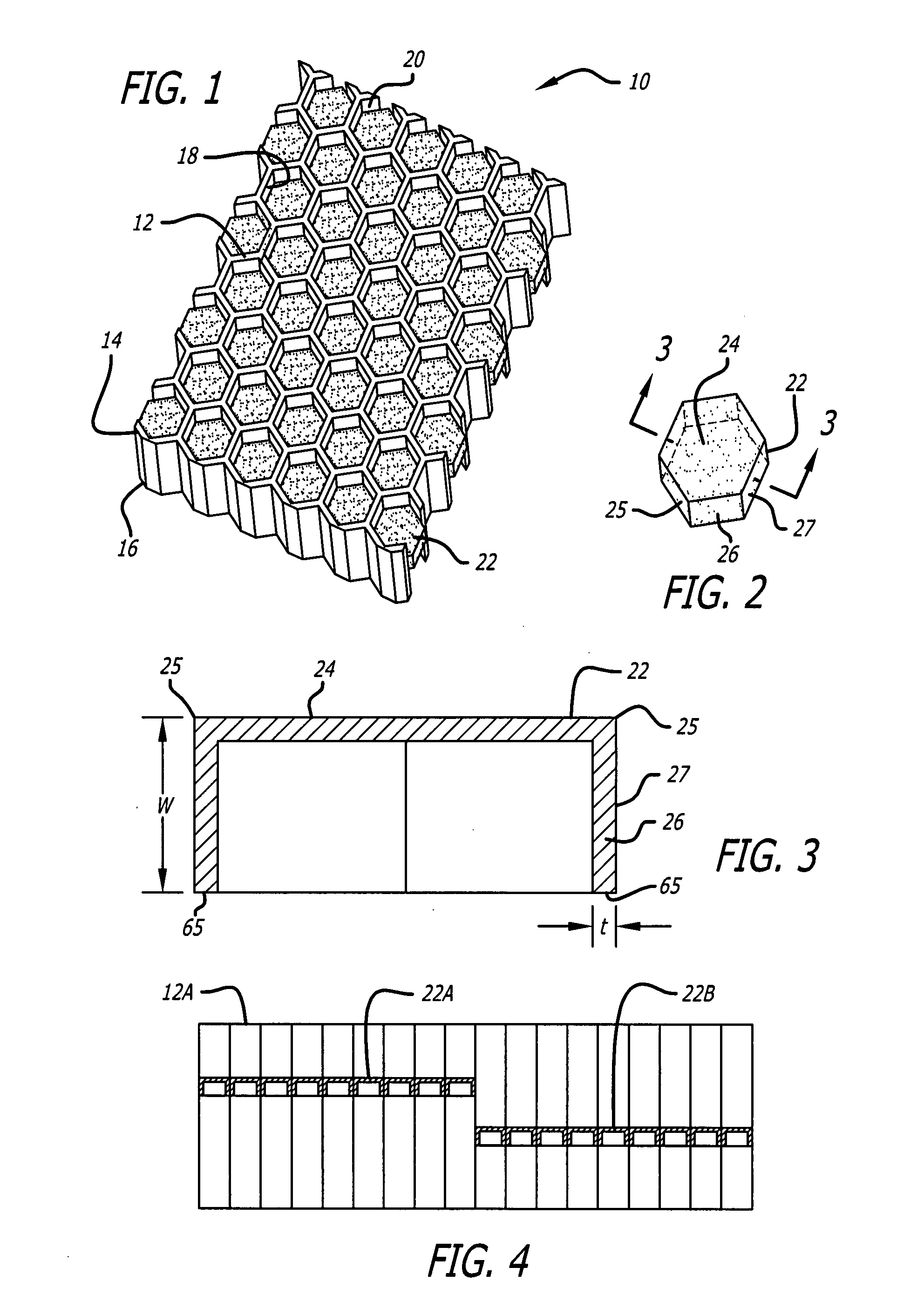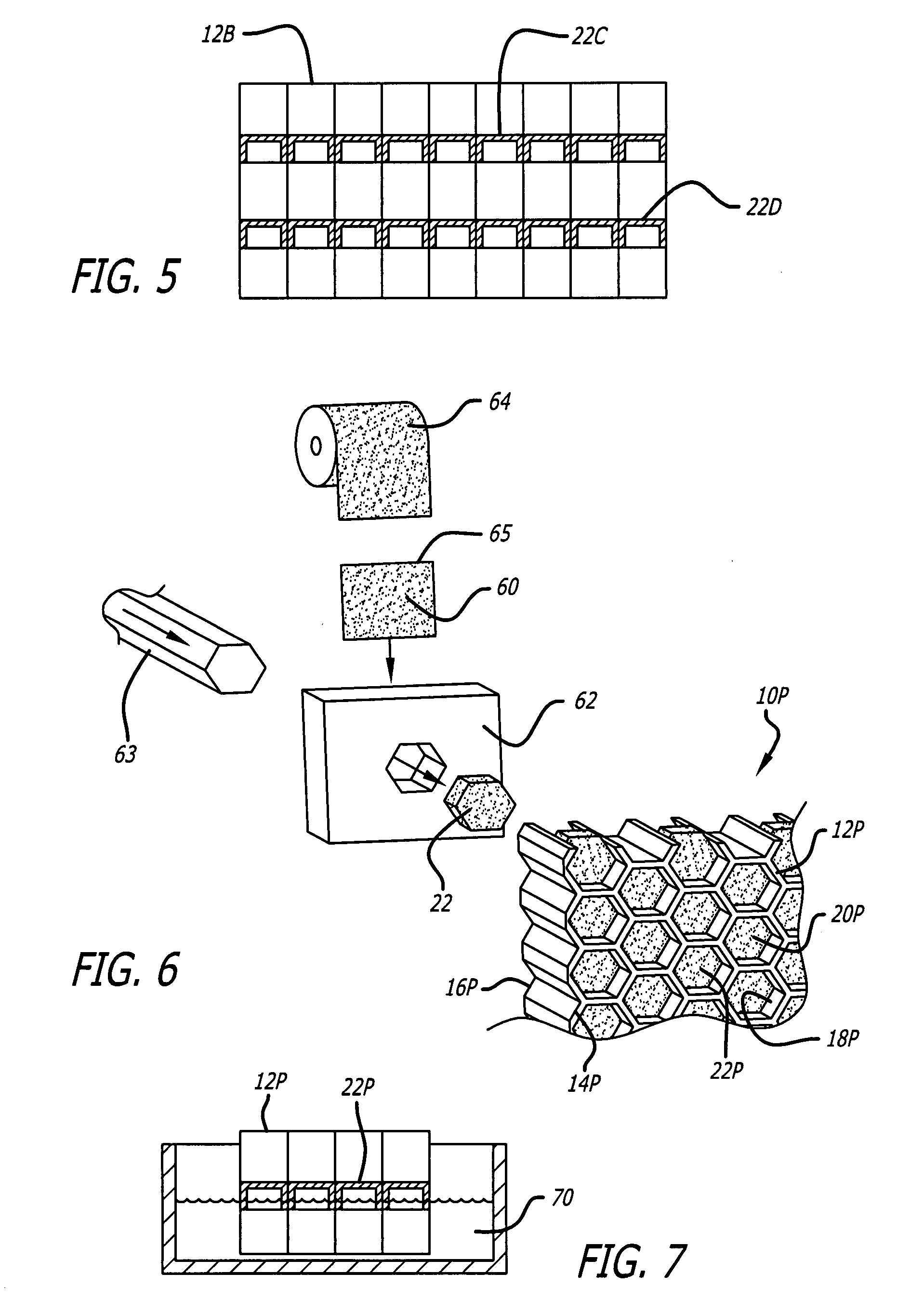Acoustic septum cap honeycomb
a technology of acoustic septum and honeycomb, applied in the field of acoustic systems, can solve problems such as reducing flexibility
- Summary
- Abstract
- Description
- Claims
- Application Information
AI Technical Summary
Benefits of technology
Problems solved by technology
Method used
Image
Examples
Embodiment Construction
[0027] An exemplary acoustic structure in accordance with the present invention is shown generally at 10 in FIGS. 1 and 6. The acoustic structure 10 includes a honeycomb 12 having a first edge 14 which is to be located nearest the noise source and a second edge 16. The honeycomb 10 includes walls 18 that extend between the two edges 14 and 16 to define a plurality of cells 20. Each of the cells 20 has a depth (also referred to as the core thickness) that is equal to the distance between the two edges 14 and 16. Each cell 20 also has a cross-sectional area that is measured perpendicular to the cell walls 18. The honeycomb can be made from any of the conventional materials used in making honeycomb panels including metals, ceramics, and composite materials.
[0028] As a feature of the present invention, septum caps 22 are located within the cells 20. It is preferred, but not necessary, that the septum caps 22 be located in most, if not all, of the cells 20. In certain situations, it may...
PUM
| Property | Measurement | Unit |
|---|---|---|
| Pressure | aaaaa | aaaaa |
| Pressure | aaaaa | aaaaa |
| Pressure drop | aaaaa | aaaaa |
Abstract
Description
Claims
Application Information
 Login to View More
Login to View More - R&D
- Intellectual Property
- Life Sciences
- Materials
- Tech Scout
- Unparalleled Data Quality
- Higher Quality Content
- 60% Fewer Hallucinations
Browse by: Latest US Patents, China's latest patents, Technical Efficacy Thesaurus, Application Domain, Technology Topic, Popular Technical Reports.
© 2025 PatSnap. All rights reserved.Legal|Privacy policy|Modern Slavery Act Transparency Statement|Sitemap|About US| Contact US: help@patsnap.com



